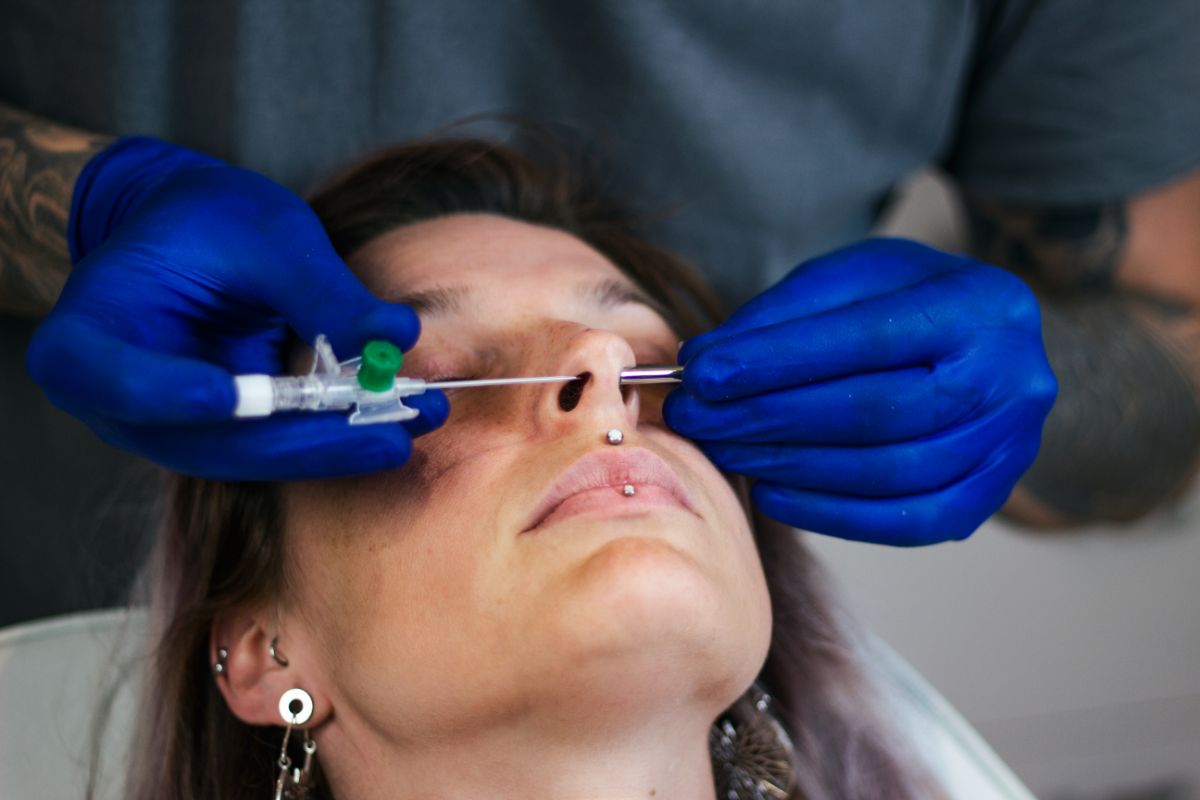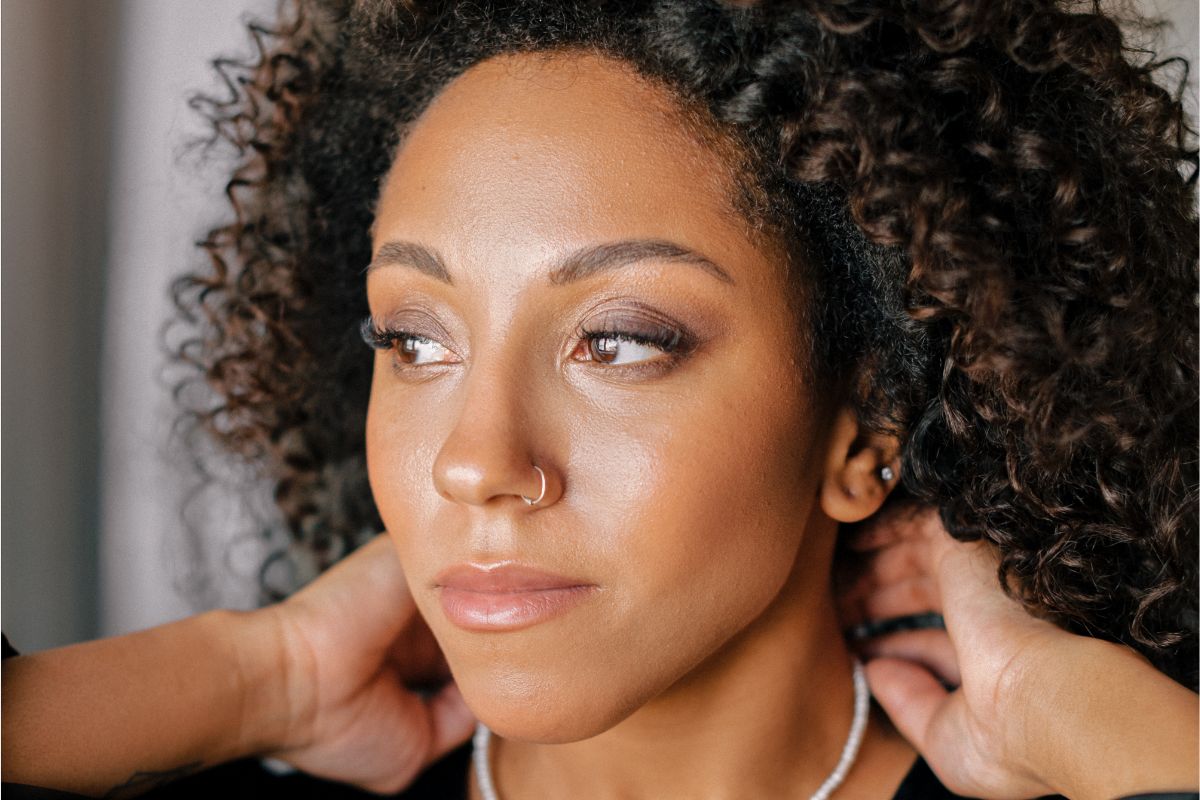Body piercing practices started in Egypt over 5,000 years ago, and over time, they’ve spread globally. Throughout history, piercings have served as symbols of honor, spirituality, sexuality, beauty, creativity, and individuality.
Beyond its symbolism, a body piercing is a hole in the skin and other tissues created with a piercing gun or needle, which is then embellished with jewelry. A piercing is a wound, and it needs the right aftercare to heal properly and last a lifetime.
What is the LITHA Method?
LITHA is an acronym for "Leave It The Hell Alone." The LITHA method is self-explanatory: Don’t touch your new piercings.
Some people follow this method as a hard and fast rule, if, for example, they know they’re prone to habits like touching or rubbing their face while thinking (particularly under stress), or fidgeting. Avoiding contact with a new piercing requires extra awareness.
You need to avoid excessively touching a new piercing, sleeping on it, changing jewelry, or washing the piercing with soap. (No two soaps are alike, and many soaps contain ingredients that can cause skin irritation. Some soaps can even aggravate infections.) But if you’re gentle with your new piercing (or piercings), you can confidently handle aftercare, which is simple and straightforward.

Cleaning While Practicing the LITHA Method
Saline solution works best for piercings. You’ll typically only need to apply it once or twice a day, unless directed by your doctor. Using too much saline solution can cause dryness, which can lead to cracks in the skin, which almost inevitably lead to unnecessary discomfort and increased risk of infection.
How to Remove the Crusties or Flakes
The LITHA method doesn't prevent you from washing or cleaning your piercing. (Remember — only use saline solution to clean your piercing. Do not use soap.)
During the healing process, your piercing will probably develop “crusties” or flakes, which form from lymphatic fluid your body releases as a natural protective response to a wound. The fluid then dries and adheres to the skin.
If you can leave the dried fluid alone, It will fall off on its own. When it does, wash your piercing gently with saline solution. Again, you don’t want to touch the flakes or crusting — pulling or plucking flakes before they’re ready to shed on their own will cause damage.
Ways to Promote Full Healing
The healing time of a piercing can vary from person to person, and the type of piercing influences healing time as well. Average healing time can be as short as three months, or it can take a year or longer, even with good aftercare. Keep your expectations realistic.
Self-care helps promote better healing — including getting enough sleep, drinking plenty of water, and abstaining from alcohol and smoking. Don’t pick at or poke your piercing, and be careful to avoid any situation where your piercing could suffer damage. Problems can occur in seemingly simple situations.
Tips to Avoid Contact with Your Piercing
Most of us don’t think about how we go through our day-to-day until an injury interrupts even the smallest things we do. Following are a few scenarios you may not have thought about that may take some creativity to avoid.
Hair Tangling in Piercing
Long hair can easily get tangled in piercings. For those with long hair, we recommend the following:
- Keep your hair up in a braid or ponytail throughout the healing process to prevent irritating your piercing.
- Stay mindful in the shower, and when combing or drying your hair. Don’t ever rush any combing, brushing, styling, or hair treatments.
Sleeping with a New Piercing
You can try a few different techniques with positioning and pillows to protect your piercing. Sleeping on your back is best. If you have a tendency to shift positions and move in your sleep, surrounding yourself with pillows can help. You can also experiment with different body pillows to make yourself more comfortable and take pressure off your new piercing. Strategically placing smaller pillows or bolsters can also provide just the right amount of elevation to keep a new piercing safe from damage or infection.
Fiddling with a Piercing
It is a natural human response to want to touch anything new on the body (as a way to acknowledge the change). Some people genuinely struggle to avoid touching a new piercing, which often results in infections because of germs on the hands.
If you find you’re having a hard time avoiding touching your piercing, keep a fidget toy with you, or anything that keeps your hands occupied.
Final Thoughts on Aftercare
Sometimes treating a piercing can seem like an uphill battle. It will take time for your piercing to heal. Piercings require patience — there’s no getting around it.
Good piercing aftercare is essential to boost the body's natural healing process, and Saline solutions are doctor-recommended to clean and care for piercings. Saline solution is easy to use. It’s also simple and affordable.
If you’re looking for professional-quality solutions to clean, treat and soothe your piercing, Dr. Piercing aftercare products are safe to use. They are produced and tested in a cGMP-compliant and FDA-registered facility in the U.S.






